The (Un)usual Suspects
The pollinators you love – and a few you might be surprised to meet
April 19, 2021
By Emma Schell, Scheduling Coordinator
Spring has sprung, and while that means warmer weather and blooming flowers, it also means the arrival of something many people dread: pollen.
While it may be a nuisance to our noses, pollen is an essential part of plant reproduction. In order for many plants to make seeds and fruit, pollen must travel between flowers. While wind and water can do some of this work, an estimated 70-87% of flowering plants rely on animals for help.
We call these animal helpers pollinators.
1. Butterflies
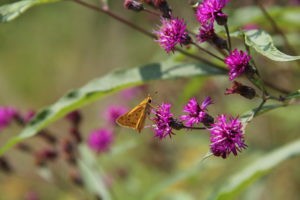
Perhaps the most widely recognized pollinator, butterflies help pollinate in a rather accidental way.
Nectar is a sugar-rich liquid found in flowers, and it is the primary food source for most butterflies. They use their long, straw-like mouth parts, called a proboscis, to reach down into the flowers and drink the nectar.
Butterflies do not intentionally collect pollen, but when one stops to drink nectar, small amounts of pollen stick to its body. As the butterfly continues its search for food, it carries this pollen to new flowers – helping to pollinate plants as it goes.
2. Bees
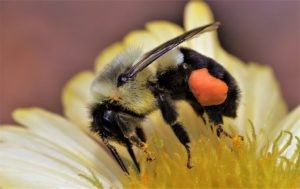
Georgia is home to over 500 species of bees, and although they might be a little less colorful than butterflies, they are the real MVPs of the pollinator world.
Both pollen and nectar are essential parts of a bee’s diet – nectar provides energy in the form of carbohydrates while pollen provides proteins and other nutrients. Because of this, bees actively collect both nectar and pollen for themselves and their larvae.
Bees possess special structures on their bodies that allow them to store and carry pollen. These adaptations allow bees to transport large amounts of pollen, sometimes 30% of their body weight, back to their nests. Along the way, they distribute this pollen to the plants they visit.
3. Wasps
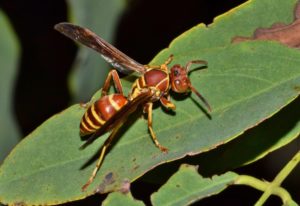
Like bees, wasps have very high energy needs. While most wasps are carnivorous, they cannot survive on meat alone. They supplement their diet with a variety of sugar-rich foods such as fruits and, of course, nectar from flowers. As they pass between flowers, they transfer pollen along the way.
Wasps are less hairy than bees, and they are generally considered less efficient pollinators because less pollen is able to stick to their bodies. However, in some specialized environments, specific wasp species have been shown to outperform their honeybee counterparts.
Though they may not be as widely impactful as a bee, wasps are important specialist pollinators. Specialist pollinators are very picky in their choice of plants that they visit. They choose to visit the flowers of only one small group of plants, and often, the plants that they do visit are entirely dependent on these wasps for reproduction.
4. Flies
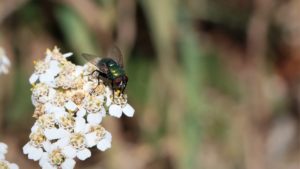
Though flies are often overlooked in discussions of pollination, this ancient group of insects was likely one of the first to pollinate early flowering plants.
Less fuzzy than most bees, they may not be the most efficient pollinators, but in some environments, flies carry the majority of the burden. Especially in cooler climates, where bee activity is reduced, flies are often the primary pollinator group.
Just like with wasps, some plants have evolved specifically to be pollinated by flies. They may emit foul odors or even resemble rotting meat in appearance. They do all of this to attract flies to their flowers.
One of these plants is the cocoa tree. The cocoa tree has small, downturned flowers that grow on its lowest branches and trunk. These flowers smell similar to some mushrooms, and they attract tiny flies that normally feed on fungi. Without these flies, the cocoa tree cannot bear fruit. Without this fruit, we humans would not have chocolate.
5. Bats
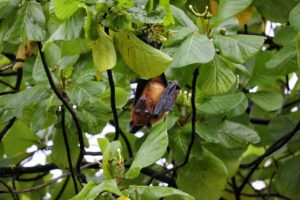
These nighttime flyers may go unnoticed much of the time, but make no mistake, they are vital to plants all over the world. Over 530 plant species rely on bats to assist with pollination – some of these plants include agave, bananas, and balsa trees.
Bats both drink nectar and also eat many of the insects that can be found in flowers. During both activities, bats collect pollen in their fur and redistribute it to other plants as they travel. Fruit-eating bats will also disperse seeds as they fly.
Bats also have a unique advantage over insect pollinators. They fly farther distances than most insects and are therefore able to transfer pollen between a wider distribution of plants.
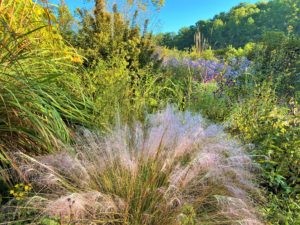
So, as the weather warms and you explore the outdoors this spring, remember that for every butterfly and bee you spot, there are many more pollinators helping with their important work.
